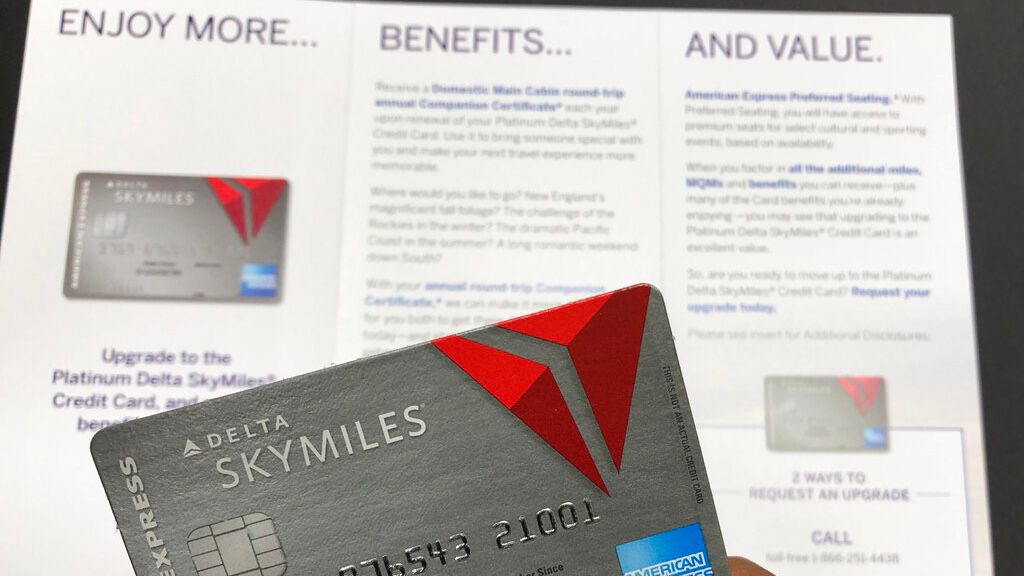Credit cards that offer airline rewards could be subject to new transparency rules, following a public hearing Thursday co-hosted by the Department of Transportation and Consumer Financial Protection Bureau.
The agencies are investigating whether airline credit cards are following through on the offers they promise or engaging in bait-and-switch tactics.
“Many customers cultivate points or miles balances just like savings accounts, but unlike the dollars in our savings accounts, the value of points and miles is completely up to the companies that issue them,” Transportation Secretary Pete Buttigieg said at Thursday’s convening of airlines, credit card issuers and consumer advocates.
“If a customer makes significant decisions that might include not just what airline to fly but what credit card to use and, in doing so, choose to pay a higher price than they would otherwise, it matters that the reward they get for that be as advertised.”
Buttigieg said the DOT and CFPB are partnering to look at the fairness, transparency and predictability of airline credit card rewards programs to ensure consumers are receiving what they were promised. The DOT is just beginning to explore the issues around airline credit card rewards programs and has not reached any conclusions, he added.
Credit cards are the most common consumer lending product in the United States, according to the Consumer Financial Protection Bureau. More than 550 million cards are in circulation in the U.S., with Americans now carrying a record $1+ trillion in debt.
“Most of us have witnessed the advertising online, in our mailboxes, on television and even while seated on an airplane about airline-branded credit cards that make promises about frequent flier mile sign-up bonuses, free round trips for you and your family and other travel perks,” CFPB Director Rohit Chopra said at the hearing.
He said frequent flyer programs have evolved from a perk for airlines’ most loyal customers into a multibillion-dollar currency market that are “major assets and competitive weapons for airlines and credit card companies alike.”
Chopra said an initial review by the agency found that large credit card issuers charge significantly higher rates on reward cards and that cardholders who carry a balance can wipe out the benefits of the rewards they signed up to get.
The CFPB’s goal, he said, is to protect people’s points from being devalued, to stop bait-and-switch tactics that prevent consumers from being able to tap the rewards they signed up for and to level the playing field between large and small airlines and banks to promote competition on interest rates.
Frequent flier programs date back to the early 1980s after the airline industry was deregulated. Today, the top three U.S. airlines enroll about 100 million members in rewards programs.
According to the American Economic Liberties Project, almost a third of all payment transactions in the U.S. now involve credit cards, and 90% of those transactions involve cards offering rewards.
“For the largest carriers, loyalty programs — not anything related to flying planes — generate between 30% and 80% of their revenue,” said Morgan Harper, director of policy and advocacy for the American Economic Liberties Project. “Credit card issuers fund rewards through the huge income they generate from interest, annual fees, late fees and interchange” fees banks charge for accepting electronic payments.
Every airline, except for Delta, spends more on operations than they earn in selling passenger seats, according to Sarah Nelson, international president of the Association of Flight Attendants.
“The way these airlines reach profitability is through these credit card plans and through their cargo programs mostly,” Nelson said.
While airline reward programs began as a reward for consumers who dedicated their business to a certain airline, they often incentivize debt, she said.
“People like earning rewards, but what we’ve seen is that their efforts to earn them are no guarantee that they’re going to keep them or that they can use them in the way that was originally promised,” said Erin Witte, director of consumer protection at the Consumer Federation of America.
She said airlines often unilaterally change the terms of their rewards, devalue points and remove perks. She encouraged the DOT and CFPB to look at ways to improve fairness and predictability.
Airline competition is like a three-legged stool, said Matthew Klein, executive vice president and chief commercial officer of the ultra-low-cost carrier Spirit Airlines.
“Airline loyalty programs coupled with the banking partner rewards cards make up one part of that stool,” he said. “Another leg is airport real estate, and the third leg is the pricing power ultimately gained through the dominance of international and business traffic.”
Klein said the larger airlines make it difficult for players like Spirit to enter new markets or to sustain the airline reward programs that a large number of fliers now use.
“In the long run, it’s the customer who loses out,” he said.



